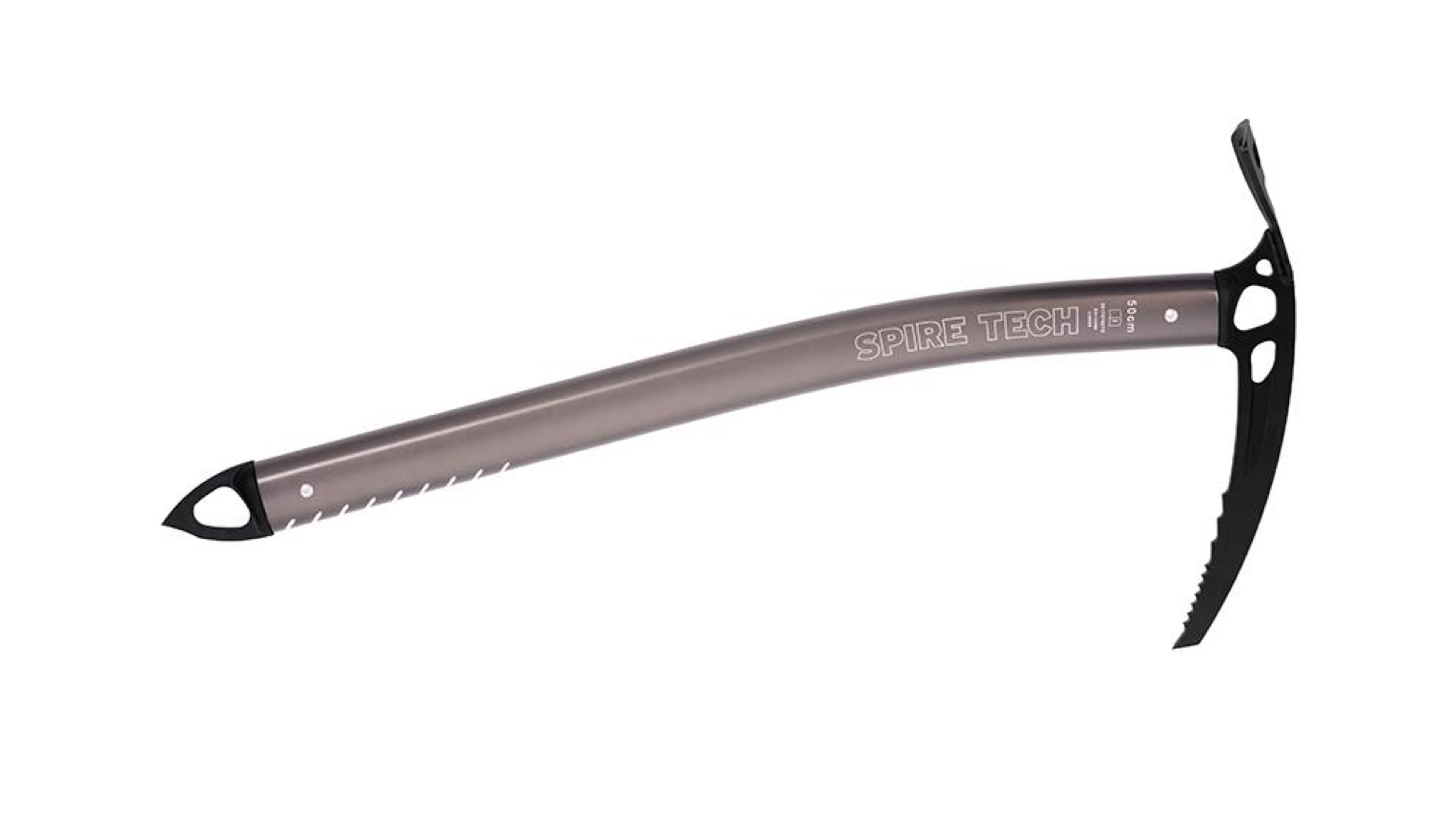Advnture Verdict
Our pick of the axes on test, the Spire Tech combines low weight with a robust build and impressive performance even on moderately steep terrain. This is an axe that straddles the divide between winter hillwalking and true mountaineering – although do note it is not T-rated.
Pros
- +
Comfortable in the hand
- +
Very lightweight
- +
Good self-arresting performance
Cons
- -
No leash supplied
- -
Despite its capabilities, not T-rated
You can trust Advnture
DMM Spire Tech: first impressions
A new addition to the brand’s range, the DMM Spire Tech is – as the name suggests – a slightly more technical version of the standard Spire (both of which feature in our best ice axe buying guide). The head is of exactly the same design, consisting of a high strength steel alloy pick and welded adze.
The head is heat-treated and hardened, then EP (electrophoretic paint) blacked to prevent corrosion. However, it has a slightly bent shaft for improved clearance when swinging the axe or climbing up steeper névé. The 12° curve also angles the pick more aggressively, enhancing performance on steeper snow and ice.
The shaft itself is made from the same anodized aluminum tube as the Spire, but adds a stylish machined grip that has a practical function, preventing the axe from slipping when you’re swinging it. It’s also even lighter than the already lightweight standard Spire – which makes the Spire Tech one of the lightest steel-headed ice axes around. As a result, it isn’t fatiguing to carry – in fact, it’s a featherweight compared to older, more traditional axes (see also: how to choose an ice axe: picking the right length and type).
At the other end of the shaft, a durable spike – also EP-blacked – is secured with a nylon bung. You also get large tethering points in both the pick and spike, for ease of clipping even with large carabiners. Just like the Spire, the Tech is designed to work with DMM’s entire range of climbing hardware.
• RRP: £90 (UK)
• Weight (45cm version): 323g / 11.39oz
• Materials: Welded steel head, anodized aluminum shaft
• Available lengths: 45cm / 17½in , 50cm / 19½in, 55cm / 21½in
DMM Spire Tech: on the hills
That slightly bent shaft undoubtedly enhances performance on steeper snow and ice. The front point penetrates superbly – in many conditions it performs almost as well as a technical ice tool, holding in ice well without too much shattering. On mixed terrain it’s also great for hooking over rock bulges, and when daggering it also gives additional clearance for hands, keeping them drier and reducing the chances of bruised or busted knuckles.
Of course, the Spire Tech’s technical capability on steep and challenging terrain comes at a slight cost on easier terrain. The curved shaft means it works slightly less well in standard piolet mode, though it still plunges easily in deep snow (see how to use an ice axe for more information on their uses in the field).
But its prowess in virtually every other regard far outweighs that slight shortcoming. Our only niggles are the fact that it isn’t supplied with a leash – though, of course, it would be simple to retrofit one. Secondly – and this is a point worth noting – despite the Spire Tech’s capability, the shaft and pick are not T-rated, unlike the older DMM Cirque, which it is effectively replacing. So, if you want a T-rated DMM ice axe, you’ll now have to look to the pricier and heavier DMM Raptor.
All the latest inspiration, tips and guides to help you plan your next Advnture!
An outdoors writer and editor, Matt Jones has been testing kit in the field for nearly a decade. Having worked for both the Ramblers and the Scouts, he knows one or two things about walking and camping, and loves all things adventure, particularly long-distance backpacking, wild camping and climbing mountains – especially in Wales. He’s based in Snowdonia and last year thru-hiked the Cambrian Way, which runs for 298 miles from Cardiff to Conwy, with a total ascent of 73,700 feet – that’s nearly 2½ times the height of Everest. Follow Matt on Instagram and Twitter.


